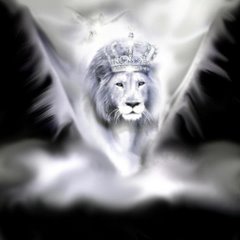
European Dragons
Sardinian dragon
scultone
The dragon named "scultone" or "ascultone" belongs to the tradition of Sardinia, Italy from many millenniums. It had the power to kill the human beings by its gaze. It was a sort of basilisk, lived in the bush and was never killed.
The dragon named "scultone" or "ascultone" belongs to the tradition of Sardinia, Italy from many millenniums. It had the power to kill the human beings by its gaze. It was a sort of basilisk, lived in the bush and was never killed.
Scandinavian & Germanic dragons
lindworm
Or the "Draco serpentalis" is a very large wingless serpent with two legs, the lindworm is really closer to a wyvern or to a knucker. They were believed to eat cattle and symbolized pestilence, but seeing one was considered good luck. The dragon Fafnir, killed by the legendary hero Sigurd, was called an ormr ('worm') in Old Norse and was in effect a giant snake; it neither flew nor breathed fire. The dragon killed by the Old English hero Beowulf, on the other hand, did fly and breathe fire and was actually a European dragon.
Or the "Draco serpentalis" is a very large wingless serpent with two legs, the lindworm is really closer to a wyvern or to a knucker. They were believed to eat cattle and symbolized pestilence, but seeing one was considered good luck. The dragon Fafnir, killed by the legendary hero Sigurd, was called an ormr ('worm') in Old Norse and was in effect a giant snake; it neither flew nor breathed fire. The dragon killed by the Old English hero Beowulf, on the other hand, did fly and breathe fire and was actually a European dragon.
Welsh dragon
Y Ddraig Goch
The red dragon is the traditional symbol of Wales and appears on the Welsh national flag.
The red dragon is the traditional symbol of Wales and appears on the Welsh national flag.
Hungarian dragons (Sárkányok)
zomok
A great snake living in a swamp, which regularly kills pigs or sheep. A group of shepherds can easily kill them.
A great snake living in a swamp, which regularly kills pigs or sheep. A group of shepherds can easily kill them.
sárkánykígyó
A giant winged snake, which in fact a full-grown zomok. It often serves as flying mount of the garabonciások (a kind of magician). The sárkánykígyó rules over storms and bad weather.
A giant winged snake, which in fact a full-grown zomok. It often serves as flying mount of the garabonciások (a kind of magician). The sárkánykígyó rules over storms and bad weather.
sárkány
A dragon in human form. Most of them are giants with multiple heads. Their strength is held in their heads. They become gradually weaker as they lose their heads.
A dragon in human form. Most of them are giants with multiple heads. Their strength is held in their heads. They become gradually weaker as they lose their heads.
Slavic dragons
zmey, zmiy, змей, or zmaj
Similar to the conventional European dragon, but multi-headed. They breathe fire and/or leave fiery wakes as they fly. In Slavic and related tradition, dragons symbolize evil. Specific dragons are often given Turkic names (see Zilant, below), symbolizing the long-standing conflict between the Slavs and Turks.
Similar to the conventional European dragon, but multi-headed. They breathe fire and/or leave fiery wakes as they fly. In Slavic and related tradition, dragons symbolize evil. Specific dragons are often given Turkic names (see Zilant, below), symbolizing the long-standing conflict between the Slavs and Turks.
Romanian dragons
balaur
Balaur are very similar to the Slavic zmey: very large, with fins and multiple heads.
Balaur are very similar to the Slavic zmey: very large, with fins and multiple heads.
Asturian dragons
Cuélebre
In Asturian mythology the Cuélebres are giant winged serpents, which live in caves where they guard treasures and kidnapped xanas. They can live for centuries and, when they grow really old, they use their wings to fly. Their breath is poisonous and they often kill cattle to eat. Asturian term Cuelebre comes from Latin colŭbra, i.e. snake.
In Asturian mythology the Cuélebres are giant winged serpents, which live in caves where they guard treasures and kidnapped xanas. They can live for centuries and, when they grow really old, they use their wings to fly. Their breath is poisonous and they often kill cattle to eat. Asturian term Cuelebre comes from Latin colŭbra, i.e. snake.
Turkish dragons
Ejderha or Evren
This creature is strikingly different from its fire breathing, flying European counterpart. The Turkish Dragon secretes flames from its tail, and there is no mention in any legends of its having wings, or even legs. In fact, most Turkish (and later, Islamic) sources describe dragons as gigantic snakes. The blood of the Turkish Dragon has its medical properties, becoming a panacea if drawn from the head and a lethal poison if drawn from the tail.
This creature is strikingly different from its fire breathing, flying European counterpart. The Turkish Dragon secretes flames from its tail, and there is no mention in any legends of its having wings, or even legs. In fact, most Turkish (and later, Islamic) sources describe dragons as gigantic snakes. The blood of the Turkish Dragon has its medical properties, becoming a panacea if drawn from the head and a lethal poison if drawn from the tail.
Basque dragons
Herensuge
Basque for "dragon". One legend has St. Michael descending from Heaven to kill it, but only when God agreed to accompany him, so fearful it was.
Basque for "dragon". One legend has St. Michael descending from Heaven to kill it, but only when God agreed to accompany him, so fearful it was.
Sugaar
The male god of Basque mythology, also called Maju, was often associated to a serpent or snake, though he can adopt other forms.
The male god of Basque mythology, also called Maju, was often associated to a serpent or snake, though he can adopt other forms.
This wraps up part 4 of the "Dragon" series. Part 5 is coming up next and will feature American and African dragons and dragon like creatures. Enjoy!
Peace & Soulz,
Bobby Sharpewww.myspace.com/akuasharpe BobbySharpe.blogspot.com






No comments:
Post a Comment